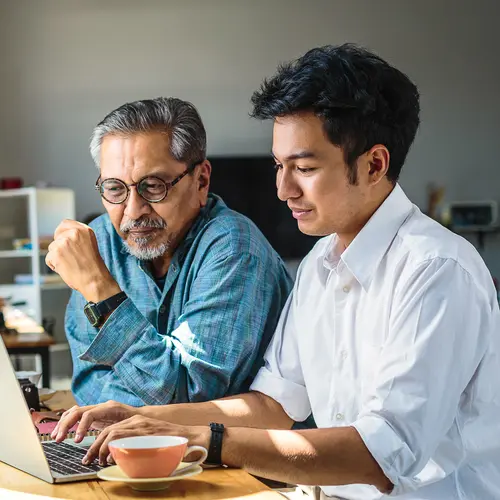Movement, stretching, and exercise are important parts of staying healthy at any age, and they’re extra important for older adults. You don’t need to bench-press like a bodybuilder or run marathons to stay fit when you’re older, though.
Along with a healthy diet, regular movement and dynamic stretches can help improve your joint and muscle health while keeping you fit enough to do other exercises.
Talk to your doctor before you start a new stretching routine to lower your chances of getting injured, though.
Static vs. Dynamic Stretches
There are two types of stretches to be aware of:
Static stretches. These usually involve putting tension on certain muscles and holding the stretch for several seconds. But this type of tension isn’t helpful to your muscles if you haven’t warmed up first. Save static stretches for after your workout as part of your cooldown.
Dynamic stretches. These are good to do before exercise as part of your warm-up. Dynamic stretches use a range of motions to wake up your muscles and joints. It can involve mimicking the movements you’d make in the sport or activity you’re warming up for, but with less intensity.
Core and Lower Body Dynamic Stretches
Walking lunge. Step forward with one of your legs, keeping your weight balanced. Lower your opposite knee until the kneecap nearly touches the floor. Raise back up by unbending your knees. Bring your first foot up to meet your opposite foot as you return to an upright stance.
Repeat and alternate until you’ve completed the desired number of reps and sets.
See a video demonstration of this exercise here.
Hula-hoop hip stretch. Stand up straight with your feet together. Place your hands on your hips. Rotate your hips as if you were spinning a hula hoop around your waist.
Air squat. Stand up straight with your feet apart at the width of your shoulders. Squat by lowering your hips, as if you were moving to sit in a chair. If you can, lower your hips until they’re at the same height as your knees. Hold the squat a moment and then raise back up to an upright stance.
When you’re squatting, make sure to keep your feet flat on the floor -- you shouldn’t be rocking or leaning. Also, try to keep your back stationary with the same curve to it.
See a video demonstration of this exercise here.
Standing quad stretch. Stand up straight with your feet apart at the width of your shoulders. Shift your balance to one leg. Using your opposite hand, grasp your opposite ankle and pull it toward your butt. If you can’t balance properly, stand near a wall or other solid object for support.
As you stretch, push your chest out and up and keep your hips forward. Hold the position for around 20 seconds, and then lower your foot as you return to an upright standing position.
Stretch in a way that allows you to feel the slight pressure in your thigh and in your hip flexors, which are muscles near the top of your thighs that are important for moving your lower body.
Upper Body and Back Dynamic Stretches
Seated shoulder stretch. Sit upright in a chair, with as little support from the chair’s backing as possible. Bring one arm across your chest by using your opposite hand for support.
Try to bring your inner elbow as close to your chest as you can. Hold the position for several seconds.
Chin drop. You can do this exercise sitting or standing. With your arms in front of you, place your elbows and palms together. Turn your hands so that your palms face you. Then place your palms on top of your head. Without pushing with your hands, gently lower your chin to your chest. Hold this position for several seconds, then return to an upright position.
Arm opener. Stand up straight with your feet apart at the width of your shoulders. Lace your fingers together behind your back and let them relax against your tailbone with your knuckles facing downward.
Without bending, slowly lift your arms away from your tailbone. Keep your interlaced hands as far from your back as you comfortably can, holding the position for several seconds.
Compound Stretches
A “compound stretch” targets more than one joint or muscle group.
Double-knee torso rotation. Lie on your back. Bend your knees, and place your feet together flat on the floor. Extend your arms outward, forming a T-shape. Keep your abs tight as you lift both knees toward your chest. Lower your legs to one side, keeping your arms relaxed, while you lower your head to your opposite side. Hold the position and then gently return your knees up to center before doing the motion again, toward your opposite side this time.
Downward dog. On the ground, get settled on all fours. Place your hands shoulder-width apart and your knees at the width of your hips. Lift your knees off the floor and straighten your legs until your body creates an upward-facing V shape. Keep your heels slightly lifted from the floor, and keep your neck and spine straight and relaxed. Shift your weight back and let your heels lower to the ground. Hold this position for several seconds before you return to the neutral position.
See a video demonstration of this stretch here.

